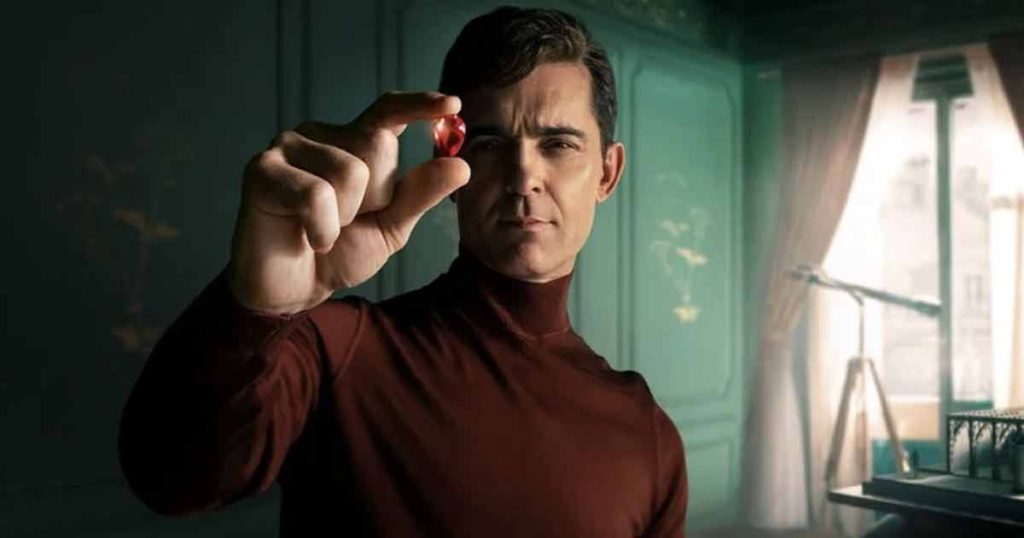Watch Of The Week: Berlin
What made the original Money Heist such an international sensation? Was it the twisty plot, which sees a band of master criminals hiding secrets and making shocking choices
before, during, and after a robbery? Or creator Álex Pina’s clever structure, which jumps around in the narrative timeline to keep viewers from learning key details too soon? Or maybe the colourful characters, each sporting the name of a major world city? All of the above were factors, sure. But so was this: Money Heist looks amazing.
The dynamic cinematography and glamorous locales still stand out in the Money Heist prequel miniseries Berlin. Even at its dullest— and there are stretches in the middle of this overlong eight-episode run that slow to a crawl— the show has the flash and polish of a blockbuster movie, shot in ritzy locations in and around Paris and Madrid.
Netflix subscribers will feel like they’re getting their money’s worth. But here’s the hangup: Those subscribers might be better off looking at the pictures and ignoring the words. Compared to its parent series, Berlin has a fairly flat plot, played out by a collection of broadly drawn antiheroes who aren’t as fascinating as Pina and primary collaborator Esther Martínez Lobato seem to believe.
Andrés de Fonollosa (Pedro Alonso), a.k.a. “Berlin,” first appeared in seasons one and two of Money Heist as a bitter mastermind, treating people like puppets while helping his brother engineer a raid on Spain’s Royal Mint. Season three then jumped back into Berlin’s past, with flashbacks showing him to be more of a gentleman thief and a happy
romantic. It’s this Berlin who anchors the spinoff, which follows him and an inexperienced team of specialists as they attempt to swipe over $40 million worth of jewellery from an auction house. As with Money Heist, Berlin uses the caper itself—the planning, the execution, and the aftermath—as a way to get to know the criminals. The new series isn’t as structurally complex as its predecessor, but there are flashbacks sprinkled throughout, some of which tell the story of Berlin’s crew.

Unlike Money Heist, though, these characters—pulpy archetypes, mostly—ultimately don’t have that many depths to plumb. Berlin himself likes to say that his two main interests are huge paydays and love. This series follows that ead, spending as much time on romance as on robbery. The ringleader swoons over a woman, Camille (Samantha Siqueiros), who starts out as just a stooge in his plan. Berlin and Damián philosophize cornily about the importance of finding someone to devote oneself to, saying together, “You cannot refuse a single moment of love!” All of the love stuff really bogs Berlin down.
After setting up the premise in a zippy first episode, Pina, Martínez Lobato, and the writers typically spend only a fraction of each subsequent chapter on the progress of the jewel heist and the rest on long scenes of the characters sniffing around each other with amorous intent. To be fair, there’s some precedence for all these emotional underpinnings in the original Money Heist. One big reason why Berlin himself became a breakout character in that series is that he seemed like an ice- cold villain until he gradually revealed his softer side and his tragic trajectory.
Berlin is meant to be a breezier adventure for him as a lighthearted rogue. (Multiple Berlin episodes end with what are effectively music videos, adding to the looser vibe.) But none of the love stories here are as exciting as the classic Money Heist loop-around scenes, where the characters seem to be in a desperate situation before the writers cut to a flashback showing how they’d already anticipated the danger and engineered a solution. Those mini-twists are always fun, especially when set against the pretty European scenery. These are Berlin’s precious gems. They’re just too rare and too damned difficult to extract.
Boluwatife Adesina is a media writer and the helmer of the Downtown Review page. He’s probably in a cinema near you.






